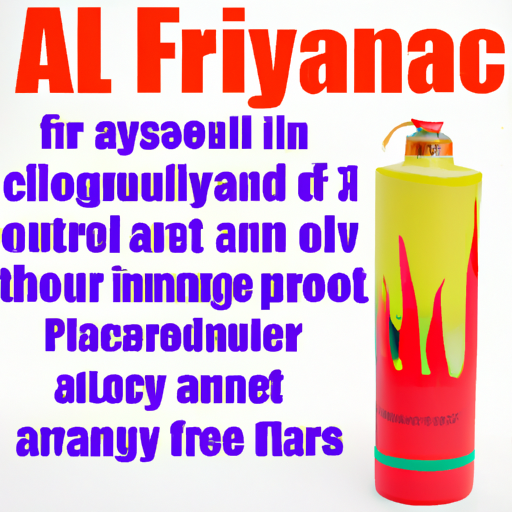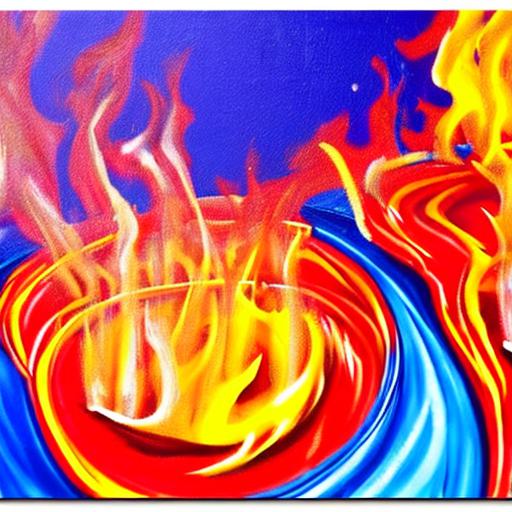Ever wondered if acrylic paint is flammable once it dries? Well, the answer might surprise you! In this article, we will explore the burning question of whether or not acrylic paint poses any fire hazards once it has dried on your canvas. So, if you’re curious about the flammability of acrylic paint and want to ensure a safe art-making experience, read on to find out more.
Is Acrylic Paint Flammable When Dry
Acrylic paint is a versatile and popular medium used by many artists, both professional and amateur. It dries quickly, provides vibrant colors, and offers great durability. However, one of the concerns that often arises is whether acrylic paint is flammable when dry. In this article, we will explore the flammability of acrylic paint, the factors that affect its flammability, the associated fire risks, and the precautions that should be taken to ensure safety.

What is Acrylic Paint
Before delving into the flammability of acrylic paint, it is important to understand what exactly it is. Acrylic paint is made up of synthetic polymers that form a water-based emulsion. This emulsion allows the paint to dry quickly, resulting in a water-resistant and flexible finish. Unlike oil paint, which consists of pigments suspended in oil, acrylic paint does not require any solvents for cleanup, making it easier to work with and more environmentally friendly.
Flammability of Acrylic Paint
While acrylic paint is not highly flammable when dry, it is important to handle it with care. When wet, acrylic paint contains a small amount of flammable solvent, usually methyl alcohol or ammonia, which evaporates as it dries. Once the paint has dried completely, the solvents are no longer present, reducing the risk of combustion.
However, it is worth noting that some acrylic paints, especially those that contain additives or mediums, may still have some flammability even when dry. These additives can have a lower flashpoint, which means they have the potential to ignite under certain conditions. Therefore, it is crucial to carefully read the product labels and safety data sheets to determine the flammability of specific acrylic paint brands and additives.
Factors Affecting Flammability
Several factors can influence the flammability of acrylic paint, even when dry. One of the main factors is the presence of additives or mediums used with the paint. Some additives, such as retarders or flow enhancers, can contain flammable substances that can increase the flammability of the paint. It is essential to be aware of the composition of these additives and use them in well-ventilated areas, away from potential ignition sources.
Additionally, the thickness of the paint layer can affect its flammability. Thicker layers can take a longer time to dry, which means the flammable solvents may still be evaporating, making the paint more susceptible to ignition. Thin, even layers of paint are less likely to pose a fire hazard when fully dry.
Fire Risks Associated with Acrylic Paint
While the flammability of dry acrylic paint is relatively low, it is important to understand the potential fire risks associated with its use. If ignited, acrylic paint can produce thick, black smoke, which can be toxic if inhaled. Additionally, burning acrylic paint can release toxic fumes, such as carbon monoxide and hydrogen cyanide, depending on the pigments used in the paint’s composition.
Moreover, if acrylic paint catches fire, it can spread rapidly, especially if there are flammable materials nearby. Therefore, it is crucial to be mindful of the surroundings and take necessary precautions to prevent fires.

Precautions to Take
To minimize the risk of fire when working with acrylic paint, it is essential to adhere to basic safety precautions. Here are some measures you can take:
- Work in a well-ventilated area: Ensure that there is proper air circulation in your workspace to prevent the buildup of flammable vapors. If possible, use exhaust fans or open windows to improve ventilation.
- Keep flammable materials away: Store flammable materials, such as solvents or mediums, away from potential sources of ignition. This includes heat sources, open flames, sparks, and electrical equipment.
- Avoid smoking and open flames: It goes without saying that smoking or the presence of open flames should be strictly prohibited in areas where acrylic paint is being used. Even a small spark can ignite the flammable vapors.
- Do not store in extreme temperatures: Avoid exposing acrylic paint to extreme temperatures, as this can increase the risk of combustion. Store the paint in a cool, dry place, away from direct sunlight and sources of heat.
- Dispose of waste properly: Discard any waste materials, such as rags or paper towels saturated with acrylic paint, in-lined metal containers specifically designed for the disposal of flammable materials.
Safety Measures for Storage
Proper storage of acrylic paint is crucial for ensuring safety. Here are some safety measures you should consider when storing acrylic paint:
- Choose appropriate containers: Use properly sealed containers made of metal, glass, or high-density polyethylene plastic to store acrylic paint. Avoid storing it in containers made of materials that can easily combust, such as paper or cardboard.
- Label containers: Clearly label containers with the contents and date of storage. This will help identify the paint and ensure that it is used within its recommended shelf life.
- Store away from heat sources: Keep acrylic paint away from direct sunlight, heat sources, and any potential ignition sources. Choose a cool, dry area for storage.
- Keep containers tightly sealed: Ensure that containers are properly sealed to prevent the evaporation of flammable solvents and the entry of oxygen, which can cause the paint to deteriorate.

Difference Between Flammable and Combustible
To accurately assess the flammability of acrylic paint, it is important to understand the difference between flammable and combustible materials.
Flammable materials have a flashpoint below 100 degrees Fahrenheit (37.8 degrees Celsius), which is the lowest temperature at which a substance can generate enough vapor to form an ignitable mixture in the air. Combustible materials, on the other hand, have a flashpoint above 100 degrees Fahrenheit (37.8 degrees Celsius).
While acrylic paint is considered flammable when wet due to the presence of flammable solvents, once it has dried completely, it becomes less flammable and falls into the category of combustible materials. Nonetheless, it is always important to handle both flammable and combustible materials with care and take necessary precautions.
Legal Aspects and Regulations
The flammability of art supplies, including acrylic paint, falls under the purview of various regulations and legal aspects to ensure the safety of consumers. For instance, in the United States, the Consumer Product Safety Commission (CPSC) regulates art materials to ensure they meet specific safety standards.
To determine the flammability of art supplies, including acrylic paint, manufacturers are required to conduct tests that assess their flashpoint and provide clear labeling indicating potential risks and precautionary measures. It is important to follow these labels and instructions carefully to ensure safe use of acrylic paint.

Alternatives to Acrylic Paint
If concerns regarding the flammability of acrylic paint persist, there are alternative painting mediums available that may offer a safer option. Some common alternatives include watercolors, gouache, and tempera paints, which have different compositions and drying processes.
Watercolors, for example, are composed of pigments suspended in a water-based binder, eliminating the need for any flammable solvents. Gouache and tempera paints are also water-based and do not pose significant flammability risks. These alternative paints can provide artists with different creative possibilities while minimizing potential fire hazards.
Conclusion
In conclusion, while acrylic paint is not highly flammable when dry, it is important to handle it with caution. The presence of certain additives or mediums can still increase its flammability even in its dry state. By adhering to safety precautions, such as working in well-ventilated areas, storing properly, and avoiding potential ignition sources, the risks associated with acrylic paint can be minimized. Additionally, understanding the difference between flammable and combustible materials can help gauge the level of risk involved. Ultimately, by being knowledgeable and practicing safety measures, artists can enjoy the benefits of acrylic paint while ensuring their own safety and that of their surroundings.




